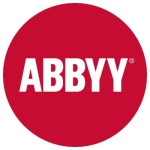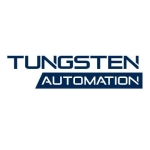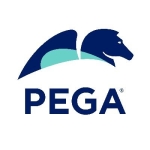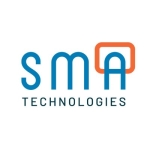We have been using UiPath to automate regular activities for a business. I'm currently working for a vendor that has a contract with a business. We are using the UiPath solution to automate all the activities that they have been doing on a regular basis. These activities have simple functions, mostly with Excel data entry and some internal applications that the client needs.
So we use UiPath to take some input, and then we process the activities for the business. Then, we share our output with them as a report on a daily basis or a monthly basis.
There are multiple angles to look at this. UiPath has helped the senior level with cost savings it has done to them by just putting the licensing in a robot and using it for all the manual activities. From the mid-level management perspective, efficiency has improved, error has reduced, and transaction turnaround time has reduced. A robot can be available 24 hours a day, and it can be used at any moment. Human users can be available, but robots have proven to be more efficient.
Turnaround time has improved for this transaction, and errors have been reduced. A bank is a service provider, and its customers use its services. From the end user's or the customer's perspective, the turnaround time for each request has reduced, the errors have reduced, and everything has been going on faster. So, these are the multiple perspectives to look at, and everyone seems to be equally happy with the UiPath solution for automation.
The most valuable features of UiPath are data entry, data reading, and some simple logical calculations. Also, the solution's ability to use Excel and to read or add data to Excel has been very useful to us as a vendor. We have been proposing solutions to the clients through these good features that we utilize to the best.
UiPath can improve its AI and optical character recognition or OCR. Currently, reading digital images or PDF documents by UiPath is a huge challenge. I request UiPath to improve the OCR recognition.
I've been using UiPath for around eight months. Earlier, I was using UiPath for personal uses, but I recently started using it professionally.
UiPath can be scalable. Currently, AI is being implemented in UiPath, and that's a huge boost to UiPath's features and what UiPath can do. It can be scaled to a bigger picture in multiple ways.
I have never personally contacted UiPath's technical support, but my team members have been contacting them for support. From what I understand, their technical support is pretty good.
I have overseen the deployment but wasn't involved in the deployment. From what I know, there will be a virtual machine, and bot licenses will be allocated. The UiPath automation will be installed on that virtual machine, and the bot will be allocated to that machine and run in a completely virtual environment. That's the only detail I'm aware of, but I was not involved with any process deployment.
From what I know, UiPath's licensing has a reasonable cost. Compared to the huge benefits the solution provides, it's still a huge saving to the organization even after the licensing cost.
We are using a virtual machine and running the UiPath bots on that virtual machine. A little bit of cloud is involved, but mostly, it's on-premises because it's a sensitive environment.
From my end, UiPath does require some maintenance. A dedicated team oversees all the existing processes that are running live. In some cases, there will be some maintenance required.
For example, if the bot's accuracy level has reduced because of some internal applications being updated or changed, the bot has to be recalibrated to adapt to the new environment. In some cases, the bot will stop, and it has to be monitored and fixed. A dedicated team is monitoring and maintaining the bots as of now.
I advise users to consider the environment where the solution will be used, the features of UiPath, and the challenges. They should consider how much UiPath would benefit that environment and how much benefit the end user will receive by implementing UiPath. UiPath has its own challenges and benefits. Do the proper research, and if you believe UiPath will be a good solution, go for it by all means.
I will say it's fairly easy to do the automation. It's fairly straightforward and easy to use. Everything is simplified to the basic ground level. Everything is in the UI elements, and using those automation tools in UiPath is quite simple.
I believe UiPath can do some automation for a good cause. Since most transactions running today are digitized, UiPath can automate all those transactions and activities, usually in an efficient environment and workflow. That would, in turn, have a huge impact on everything around it, like the environment or supporting NGOs and other organizations. UiPath can be used in such situations and will be very productive.
Since we are a UiPath vendor, we have been doing all those end-to-end automation for our clients. We have been implementing end-to-end automation for a long time now. For each case, we are supporting businesses to move from a manual workforce to a digital workforce. I can share a few live scenarios where we implement the automation for the client.
Currently, there are some cases where the customer has to replenish an ATM for a banking corporation. We are automating it end-to-end, starting from the request to replenish the ATM until the replenishment has been done. Then, the data has to be reflected in the internal application related to the bank.
We start with taking the request, passing it to a third-party vendor who will do the replenishment, and we'll take the reports from them. Then, we'll do the data entry in the internal application, which will, in turn, be stored in the organization's back end. It's a huge database where all the data is monitored closely. So, we have implemented this solution of automating their ATM replenishment.
Another use case is fraud calls, which some clients receive from outsiders. We are helping the bank mitigate all the risks and reduce the damages caused by those fraudsters by automating all their required actions, as proposed by the bank's policy, in dealing with all these fraudsters. I cannot disclose more since there is an NDA between me and my clients.
The UiPath's user community is very helpful. There is the forum, and there is the UiPath support. Most of the time, we reach out to the UiPath support for any concern we have related to the UiPath's functionality. The forums are also a great help. They have many topics, and a lot of knowledge can be gained from those forums, with everyone sharing their knowledge.
So, both have different uses and different scenarios to reach them. One is the support, and one is the forum, but both are very helpful in everything they provide.
As a vendor, we are supposed to develop and maintain the solutions we provide, including UiPath. The on-prem footprint is increasing as we implement more automation. However, the on-prem footprint has been reduced from a manual workforce because everything is automated and fully digitalized. So, there are two different angles to this. The on-prem footprint is increasing from the vendor side and reducing from the manual workforce side.
We have been using UiPath Academy courses for different roles. As a vendor, we are required to take these courses as and when they are available or updated. So, my team members and I take those courses on a frequent basis, at least once a year.
UiPath's AI functionality is something we are exploring now as a vendor. We have not implemented it in any client-side projects, but we are exploring that angle to see the possibilities of combining UiPath and AI. We plan to use AI along with UiPath in the foreseeable future.
UiPath does increase the speed of digital transformation because we are digitalizing the workforce and all the transactions carried out internally in the bank. It incurs a cost, but I wouldn't be able to answer whether it has increased or reduced the cost of digitalization. A mid-level to senior-level management employee will be able to answer it. As of now, I'm a consultant, but we are not aware of such commercialization details.
UiPath has greatly helped reduce human error by a huge margin, up to 80% to 100%.
One of the huge advantages of UiPath is that it frees up a lot of employee time by taking a huge workload from the employee and passing it to the bot. The main aim of implementing UiPath automation on any project is to reduce the workload on human users.
Overall, I rate UiPath a nine out of ten.





















